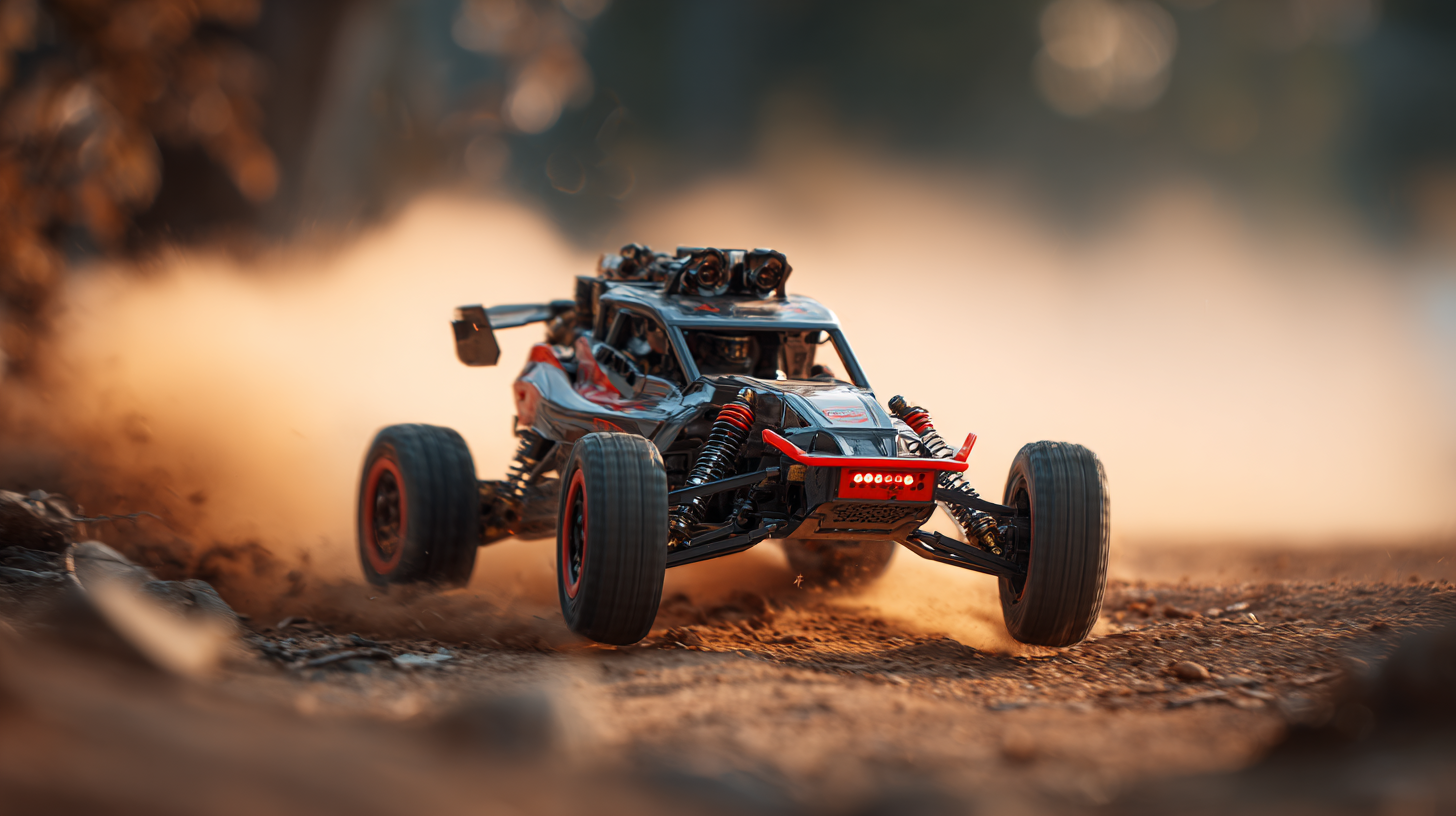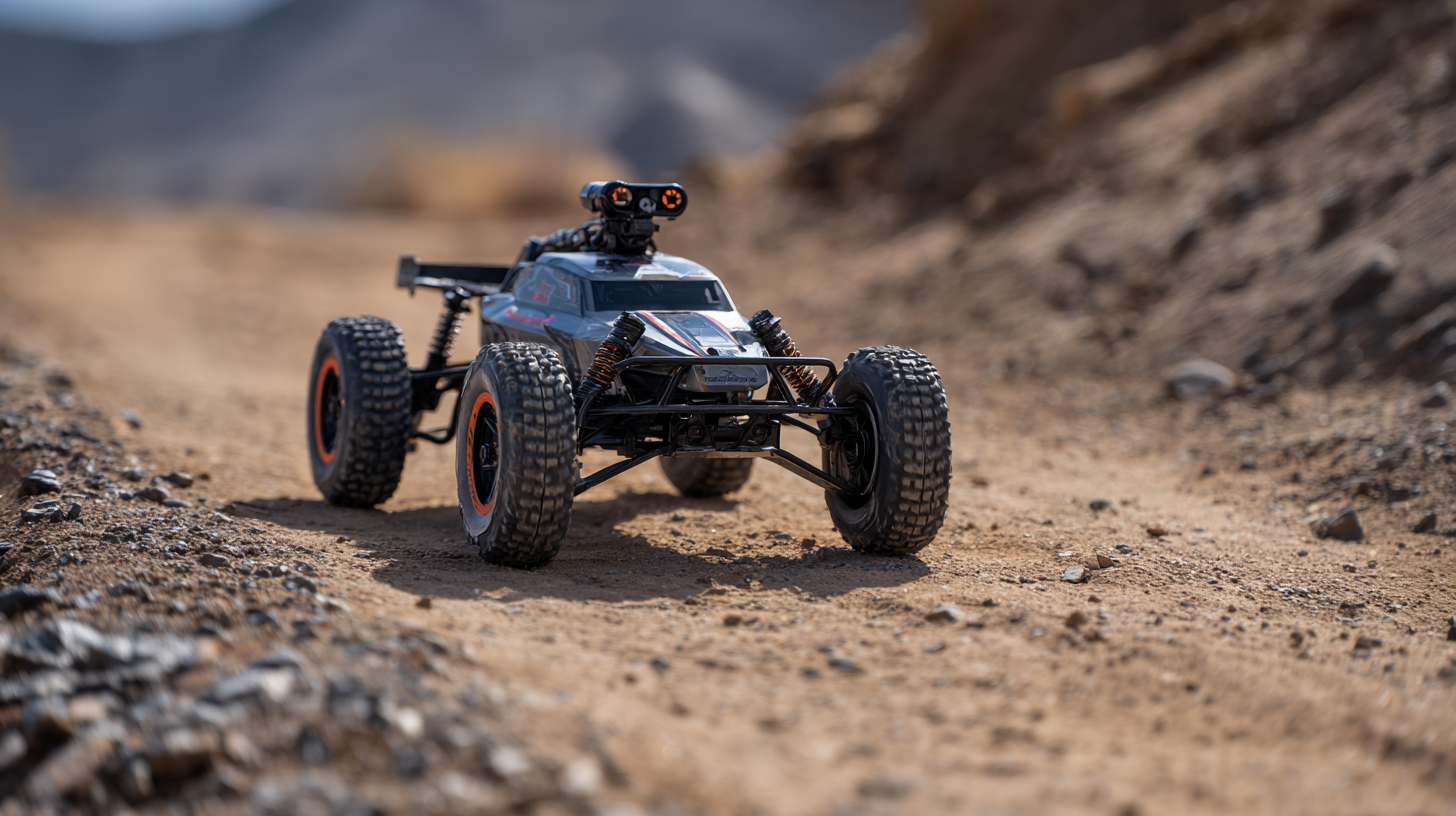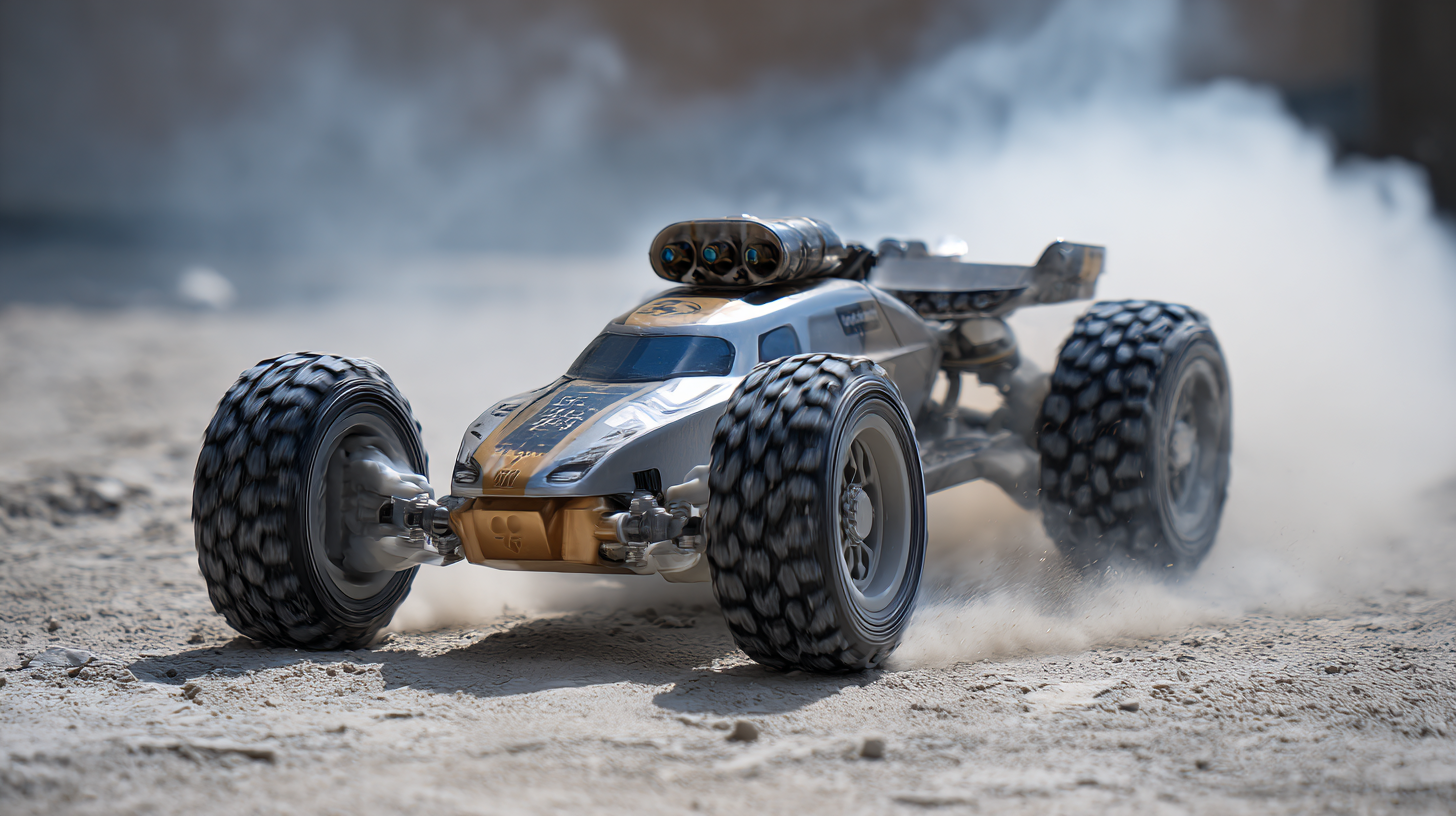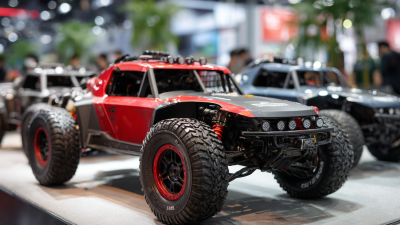 In recent years, the popularity of petrol remote control cars has skyrocketed, captivating enthusiasts and fostering a vibrant racing community. According to a report by Research and Markets, the global RC car market is projected to grow significantly, with an expected CAGR of over 9% from 2022 to 2027, showcasing increasing consumer interest in high-performance, fuel-powered models. Petrol remote control cars, known for their speed, agility, and realism, offer a thrilling alternative to electric models, allowing racers to experience the adrenaline of competitive racing from the comfort of their own backyards or specialized tracks.
As technology continues to evolve, incorporating advanced engineering and high-quality components, these vehicles are set to drive the next generation of racing adventures, appealing to both hobbyists and serious competitors alike.
Embracing the power of petrol remote control cars not only enhances the racing experience but also promotes teamwork and skill development in handling these dynamic machines.
In recent years, the popularity of petrol remote control cars has skyrocketed, captivating enthusiasts and fostering a vibrant racing community. According to a report by Research and Markets, the global RC car market is projected to grow significantly, with an expected CAGR of over 9% from 2022 to 2027, showcasing increasing consumer interest in high-performance, fuel-powered models. Petrol remote control cars, known for their speed, agility, and realism, offer a thrilling alternative to electric models, allowing racers to experience the adrenaline of competitive racing from the comfort of their own backyards or specialized tracks.
As technology continues to evolve, incorporating advanced engineering and high-quality components, these vehicles are set to drive the next generation of racing adventures, appealing to both hobbyists and serious competitors alike.
Embracing the power of petrol remote control cars not only enhances the racing experience but also promotes teamwork and skill development in handling these dynamic machines.
Petrol remote control cars have captivated enthusiasts with their speed and performance, but understanding the mechanics behind these machines is essential for achieving optimal results. At the heart of petrol RC cars is a two-stroke or four-stroke engine, which significantly affects speed, torque, and handling. According to the RC car industry report, the market for these high-performance vehicles is projected to grow by 7.5% annually, reflecting a growing interest in advanced racing technology. Mechanics such as weight distribution, engine tuning, and tire selection can drastically influence a car’s performance, allowing for customization according to individual racing conditions.
Optimizing the performance of petrol remote control cars also involves an in-depth understanding of the fuel mixture and the power-to-weight ratio. A typical low-end petrol RC car may weigh around 3-5 kg, while high-performance models can reach speeds exceeding 100 km/h with the right tuning. Moreover, adjustments to the carburetor and exhaust system can yield significant improvements in speed and efficiency. The integration of innovative materials and technologies, such as lightweight carbon fiber components, continues to push the boundaries of what these vehicles can achieve, making mastering the mechanics a vital aspect for any serious racer.
This chart demonstrates the performance of different petrol remote control cars based on various metrics such as top speed, acceleration, and handling. The data showcases how these factors contribute to the overall racing experience.
When it comes to maximizing the racing thrills with petrol remote control (RC) cars, choosing the right terrain plays a crucial role. Whether you’re aiming for speed on a smooth surface or tackling rugged off-road paths, the performance of your RC car can vary dramatically based on the environment. Recent statistics indicate that up to 60% of RC enthusiasts prefer off-road racing for its unpredictability and excitement. Selecting a terrain that complements your car's capabilities not only enhances performance but also contributes significantly to the overall racing experience.
For those venturing into off-road racing, features like durable construction and adjustable speeds are essential. Many models now cater specifically to this demand, offering robust designs capable of enduring rough terrains while providing thrilling speed options. Surveys show that 75% of hobbyists invest in off-road models for their versatility, enabling them to conquer various challenges—be it climbing rocky inclines or navigating through muddy patches. Additionally, the increasing popularity of backyard racetracks has led to a surge in demand for petrol RC cars that can withstand rigorous outdoor conditions, ensuring that racing remains exhilarating and accessible to both novices and seasoned racers alike.

Proper maintenance of your petrol remote control car is crucial for ensuring its longevity and performance. Regularly cleaning the engine and air filter prevents dirt and debris from causing damage. Make it a habit to inspect these components after each race to ensure optimal performance. Additionally, regularly checking and tightening screws can prevent unexpected breakdowns during your racing adventures.

Another essential tip is to regularly change the fuel. Using fresh, high-quality fuel enhances the efficiency of the engine and prevents carbon build-up. Remember to drain any fuel left in the tank after your sessions, as stale fuel can lead to poor performance and engine issues over time. Additionally, adding oil to the moving parts can reduce friction, prolonging the life of your car.
Lastly, give your tires some love. Ensuring they are in good condition and appropriately inflated can significantly improve handling on the track. Checking for wear and replacing them when necessary will enhance your racing experience and keep your petrol RC car running smoothly. Paying attention to these simple maintenance tips can lead to countless thrilling racing adventures.
When diving into the world of remote control cars, petrol models and their electric counterparts each have their unique attributes and challenges. Petrol RC cars, typically equipped with two-stroke engines, provide a robust performance that appeals to many enthusiasts. They often deliver superior speed and handling on rough terrains, achieving speeds of up to 50-70 km/h, depending on the model. However, petrol cars require more maintenance and fuel management, which can be a drawback for casual hobbyists. According to industry reports, petrol cars offer a longer run time compared to electric models, but the emissions and noise can be a concern for environments that prefer quieter, cleaner alternatives.
On the other hand, electric RC cars have gained popularity due to their ease of use and lower maintenance needs. With advancements in battery technology, many high-performance electric models can now match or even exceed petrol cars in speed, capable of reaching 60 km/h in some cases. They are quieter and produce zero emissions, making them ideal for racing in residential areas. However, battery life remains a critical consideration, as most models may only run for 20-30 minutes before needing a recharge. A recent report indicated that electric models account for over 60% of the market share due to these convenience factors.
Tips for enthusiasts: When choosing between petrol and electric models, consider your racing environment. Petrol cars are better suited for wide-open spaces, while electric models excel in smaller, controlled settings. Additionally, investing in a quality battery management system for electric cars can significantly enhance performance and longevity.
When it comes to petrol remote control cars, customization can take your racing experience to the next level. From enhancing speed to improving agility, there are numerous modifications you can make to unleash the full potential of your RC car. A popular approach is to upgrade the engine to a more powerful model. This not only increases top speed but also improves acceleration, giving you an edge in competitive racing.
Another key area for customization is the suspension system. Installing high-performance shock absorbers can greatly enhance your car's handling, especially during sharp turns. This allows for better control at high speeds, making your racing adventures more thrilling. Remember, a well-tuned suspension can mean the difference between victory and defeat.
**Tips:** Focus on balancing speed and handling when customizing your car. Overly powerful engines can make cars difficult to control. Additionally, consider weight reduction techniques, such as using lightweight materials, to improve both speed and agility. Lastly, never underestimate the impact of tire selection—choose the right tires for your racing environment to maximize traction and performance.
| Model | Engine Type | Top Speed (km/h) | Weight (kg) | Customization Options |
|---|---|---|---|---|
| Racer X1 | 2-Stroke | 60 | 2.5 | Engine tuning, Weight reduction |
| Storm Racer | 4-Stroke | 65 | 2.8 | Tire upgrades, Suspension tuning |
| Turbo Phantom | Nitro | 70 | 3.0 | Performance exhaust, ECU remapping |
| Speed Demon | 2-Stroke | 75 | 2.6 | Aerodynamic body kit, Lightweight materials |
| Rapid Fury | 4-Stroke | 68 | 3.1 | Custom paint jobs, Enhanced steering |






